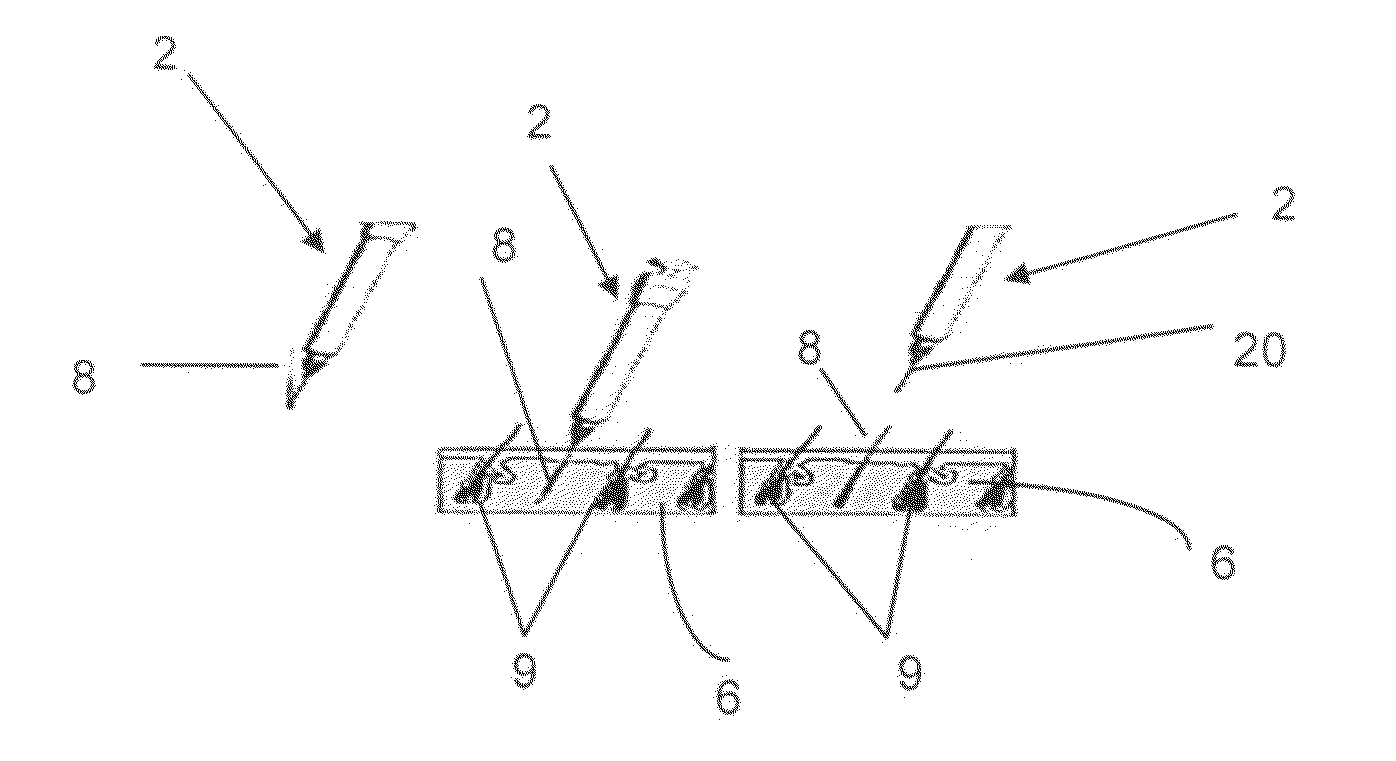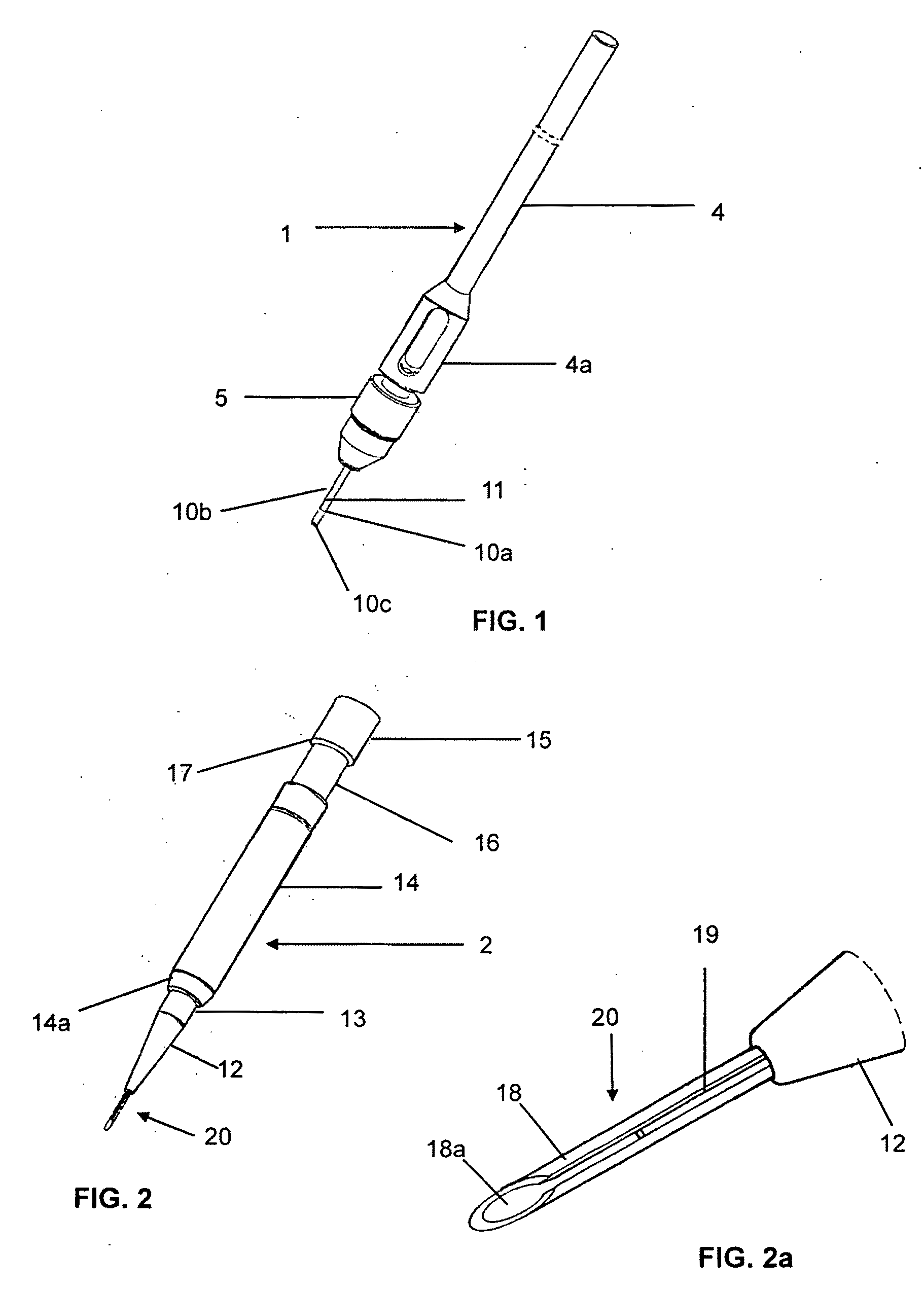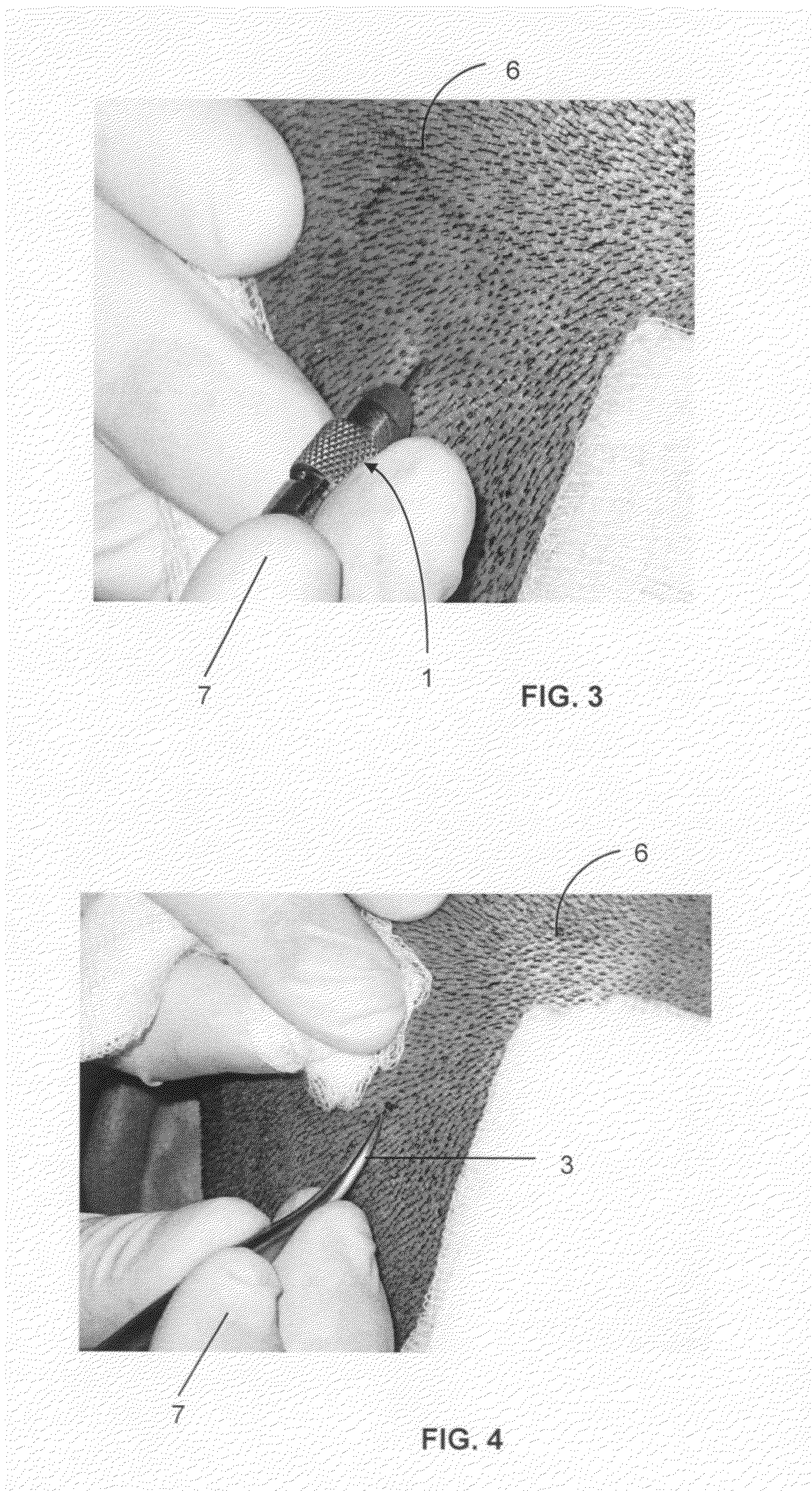Method of direct hair implantation
a hair implantation and hair technology, applied in the field of direct hair implantation, can solve the problems of restricting the normal activities of the client, slow process, and low efficiency, and achieve the effects of reducing anesthesia, shortening the duration of the operation, and minimizing the fatigue factor
- Summary
- Abstract
- Description
- Claims
- Application Information
AI Technical Summary
Benefits of technology
Problems solved by technology
Method used
Image
Examples
Embodiment Construction
[0020]The aim of the technique disclosed in the present invention is the extraction of hair follicles from the back of the scalp, from the occipital and temporal area that is known to be the area of permanent hair, hereinafter being referred to as the donor area and the immediate placement of those hair follicles to the area of temporary hair that is known to be the area of the forehead, middle and crown area of the scalp, hereinafter being referred to as the recipient area, in order to restore the permanent hair loss that has occurred in this area due to various reasons, most commonly due to androgenetic alopecia.
[0021]The direct hair implanting process is a minimally invasive technique that takes place directly, without the interference of Petri dishes or graft processing under the microscope, with the patient on seated position. The proposed process ensures significantly less bleeding, trauma and pain, both in the donor and the recipient area. In addition, the direct extraction a...
PUM
 Login to View More
Login to View More Abstract
Description
Claims
Application Information
 Login to View More
Login to View More - R&D
- Intellectual Property
- Life Sciences
- Materials
- Tech Scout
- Unparalleled Data Quality
- Higher Quality Content
- 60% Fewer Hallucinations
Browse by: Latest US Patents, China's latest patents, Technical Efficacy Thesaurus, Application Domain, Technology Topic, Popular Technical Reports.
© 2025 PatSnap. All rights reserved.Legal|Privacy policy|Modern Slavery Act Transparency Statement|Sitemap|About US| Contact US: help@patsnap.com



